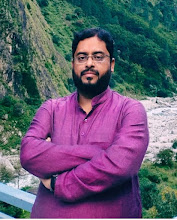Can you give up your Lord Jagannath? Will you stop
worshipping your deity? If you can’t, how do you think we will surrender our
God Niyam Raja and His abode Niyamgiri to Vedanta?” asked Dambru Majhi, a
villager of Kunakadu in Kalahandi district in South Odisha, where the fourth Palli Sabha out of
the scheduled twelve was held in the presence of 21 voters out 22
in the village.
 |
| HOLY HILL NIYAMGIRI IN SOUTH ODISHA |
Two out of the total present were women. Hundreds of
Dongaria Kandh women and men of different other villages of Kalahandi and
Rayagada districts were present too. Dambru compared his God Niyamraja with the
Jagannath and pointed his question to the independent observer PK Jena, who was
appointed by the Supreme Court to oversee the process of the meeting in five
villages of Kalahandi district in South Odisha.
“We will die like Renda Majhi and Birsha Munda to protect
our God and land,” he said valiantly.All the participants of the Palli Sabha
presented their statement one by one. The same opposition to the mining plan
resonated in the air. “The Government has deprived us of our basic rights to
livelihood, health and education. Our source of living is Niyamgiri. There is
no hospital here. Niyamgiri heals our diseases by providing us herbs and roots.
It gives us food and water. So, how can we allow you to ruin that?”the
villagers asked.
Regarding the allotment of land under Forest Right Act
(FRA)– 2006, the villagers said that the administration has allotted only one
or two decimals of land to some of the households. “We have not placed any
claim in the Palli Sabha till now. How did the administration give the
entitlement? they asked and claimed that the officials have generated false
claims to give small pieces of lands to some villagers to befool them. “We
think our signatures have been forged,” they added.
Like in previous Palli Sabha held in the village Tadijhola
on July 23 last, the villagers here also demanded a copy of the proceeding of
the meeting before signing it. “All the villagers are opposing mining. They
claimed that Niyamgiri is source of their lives,” said the observer to media. “The same feelings prevail in all the villages
of Niyamgiri hills and we hope the villages will oppose the mining proposal,”
said Green Kalahandi president Siddhartha Naik. Source: The Pioneer
,+Berhampur,+India.png)



























